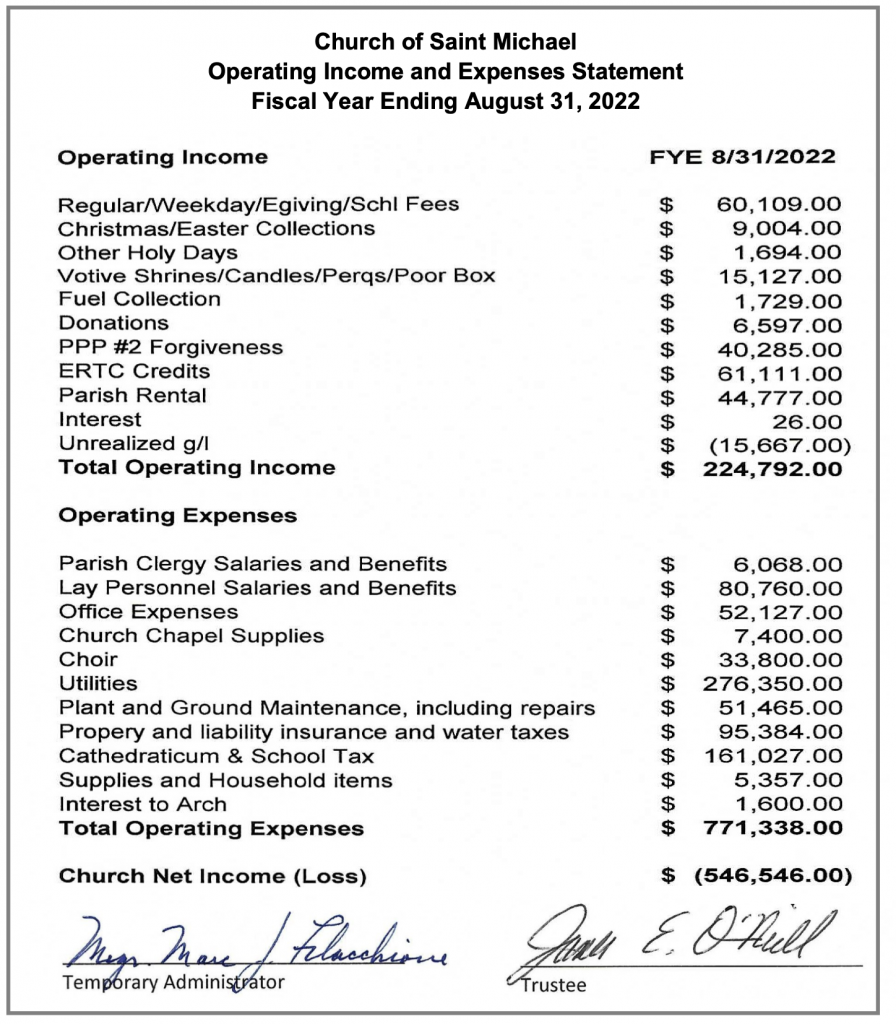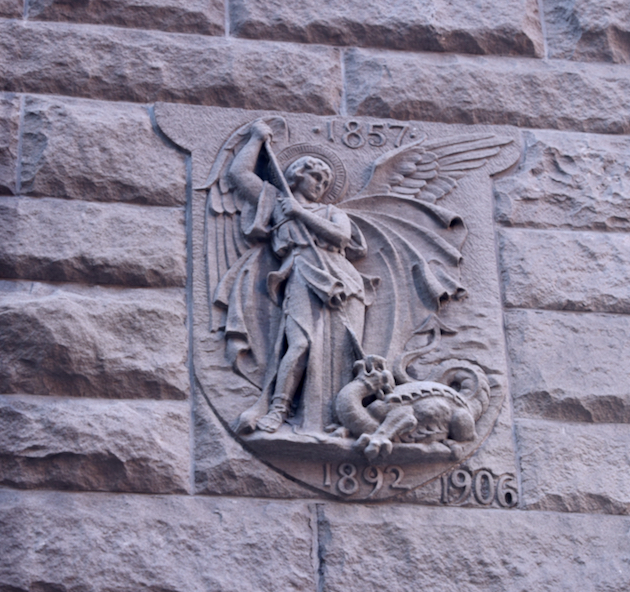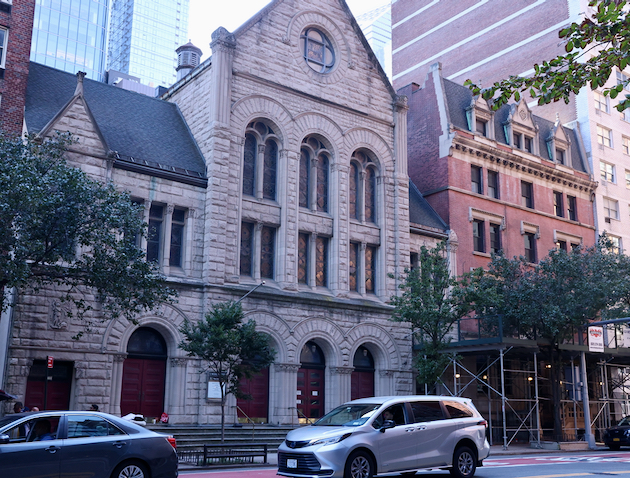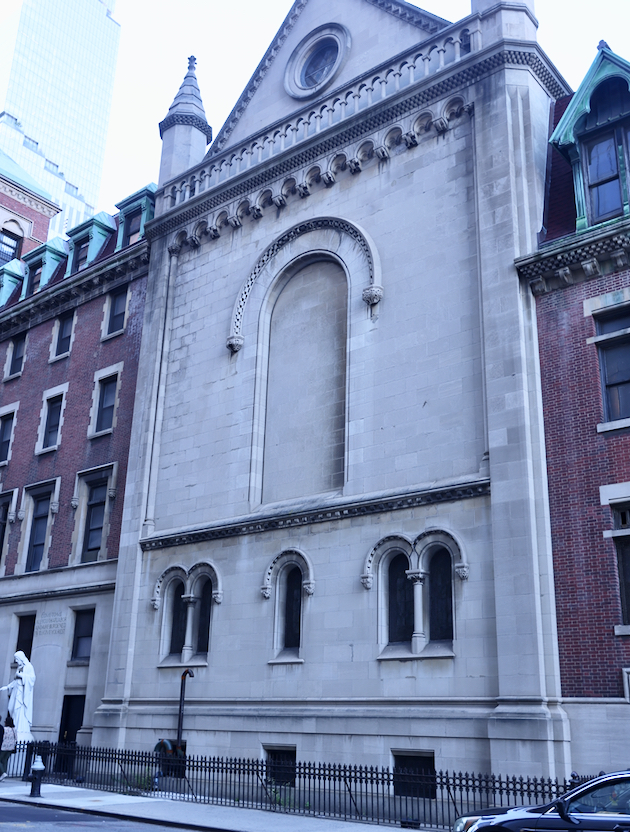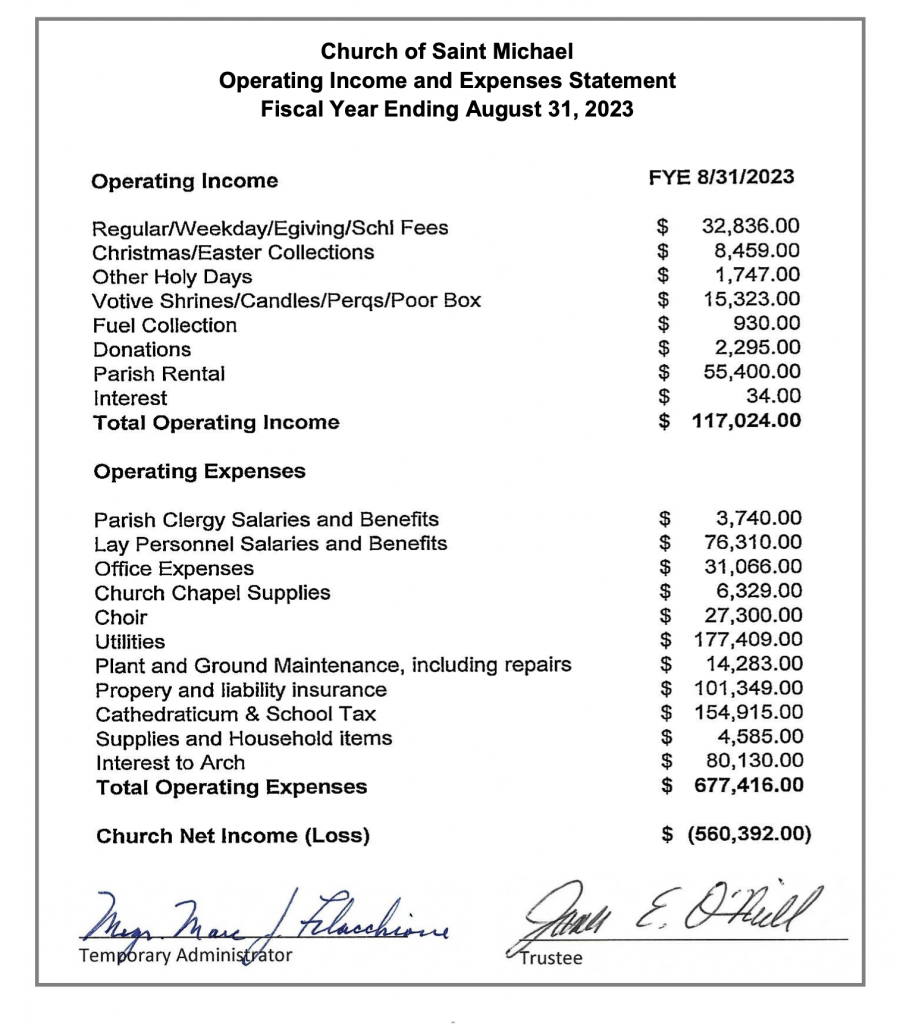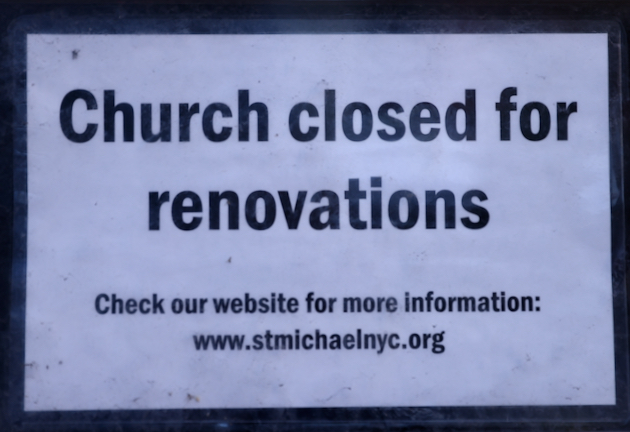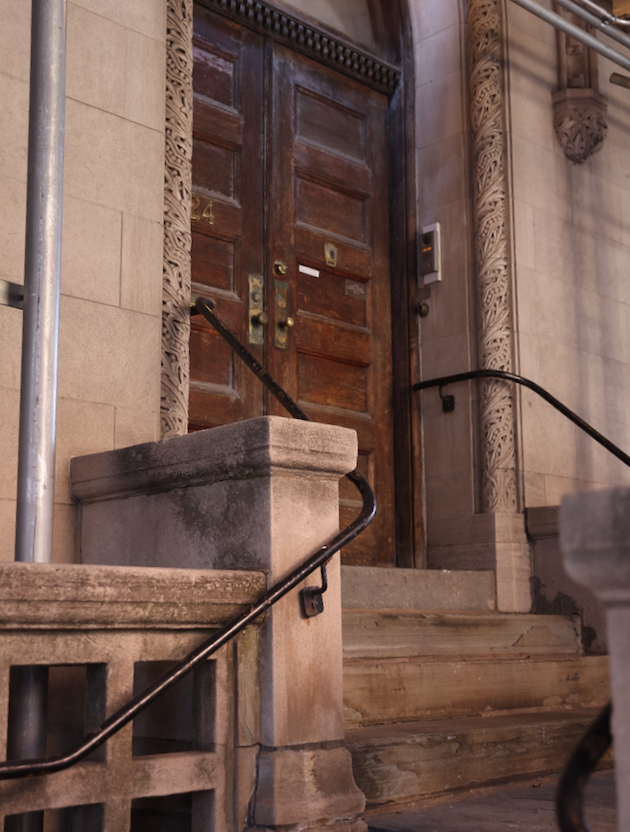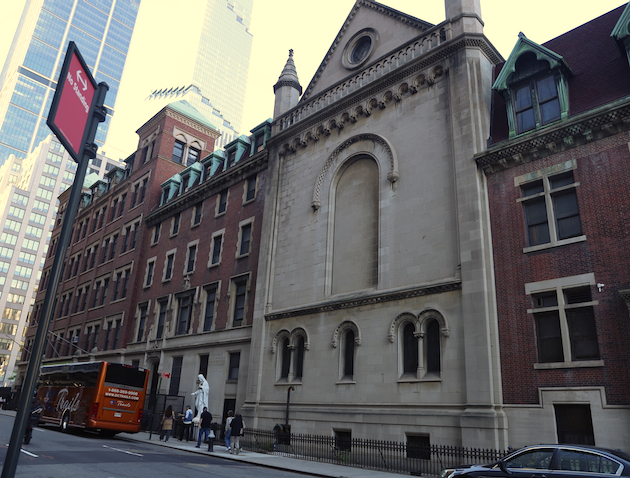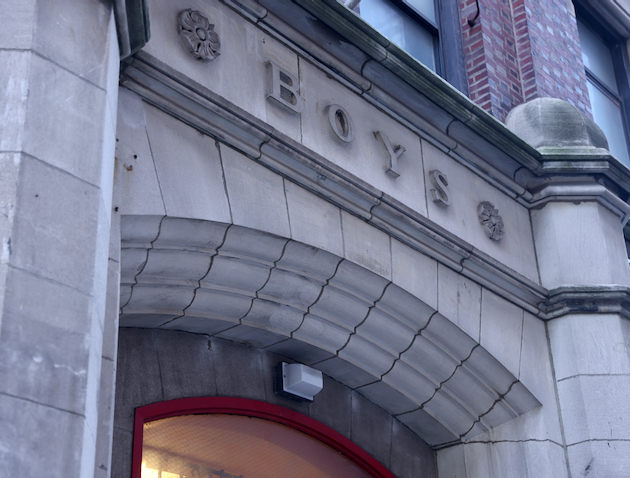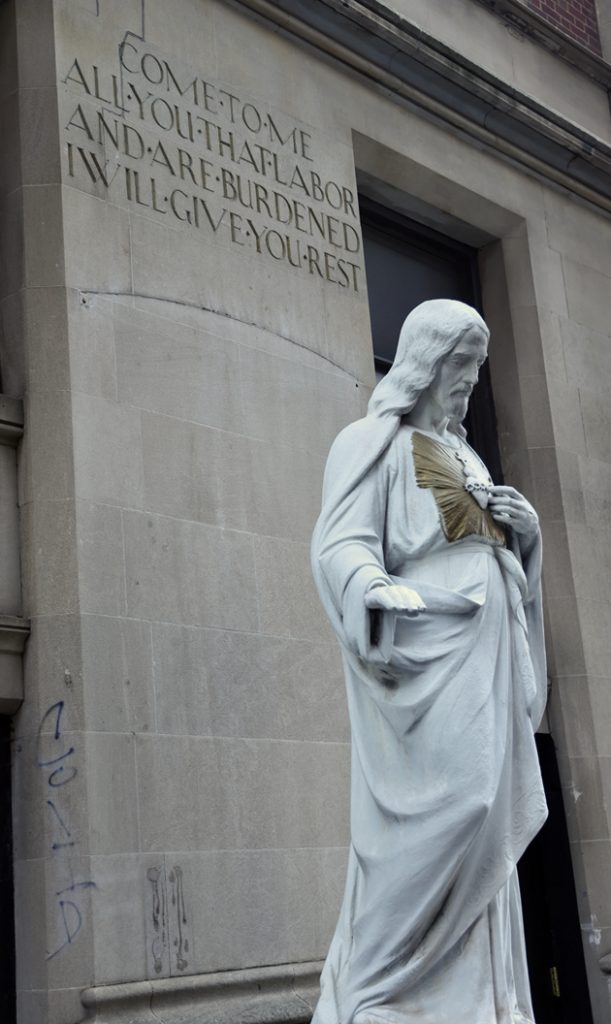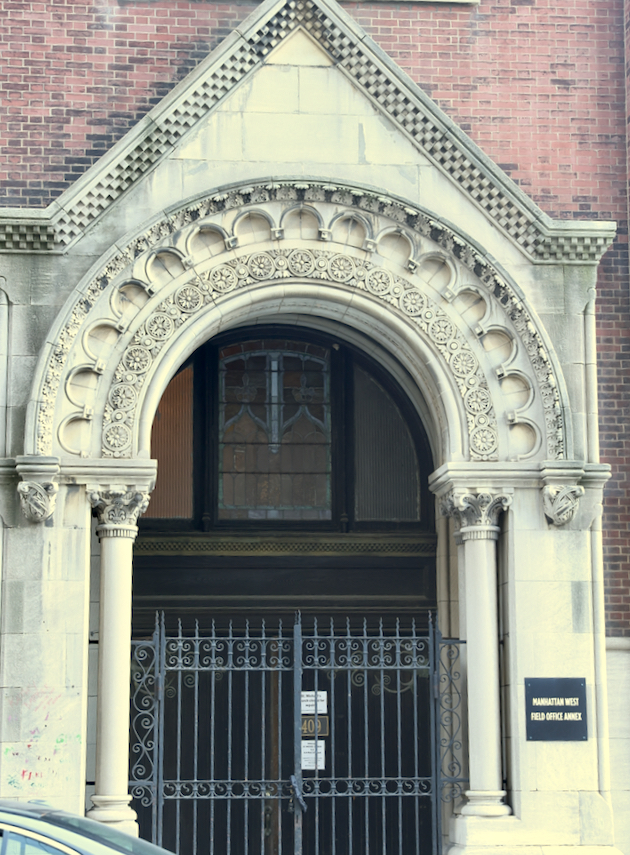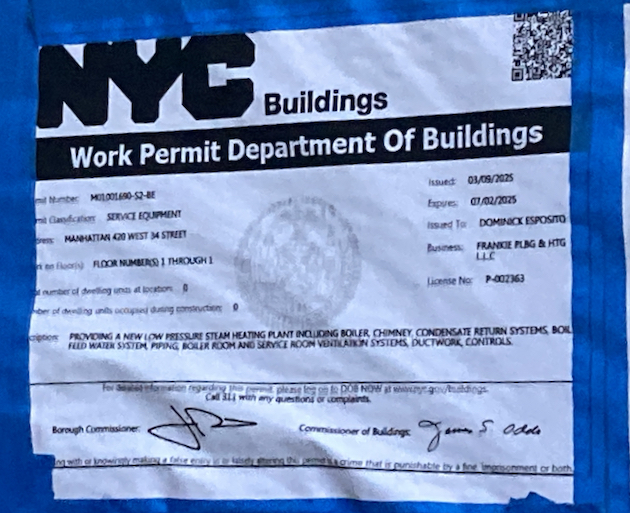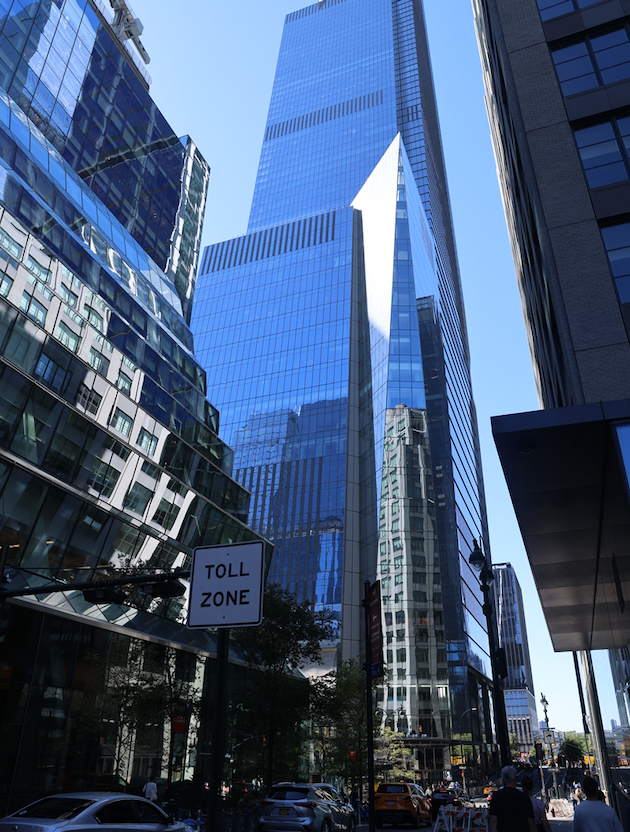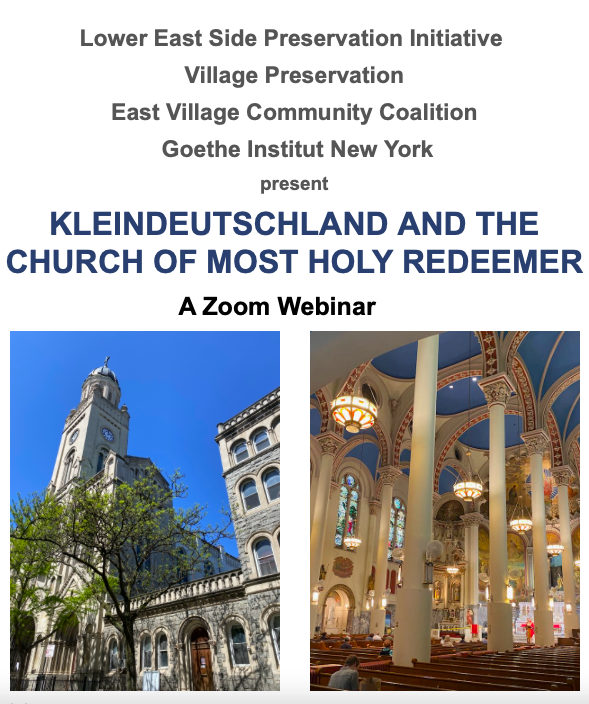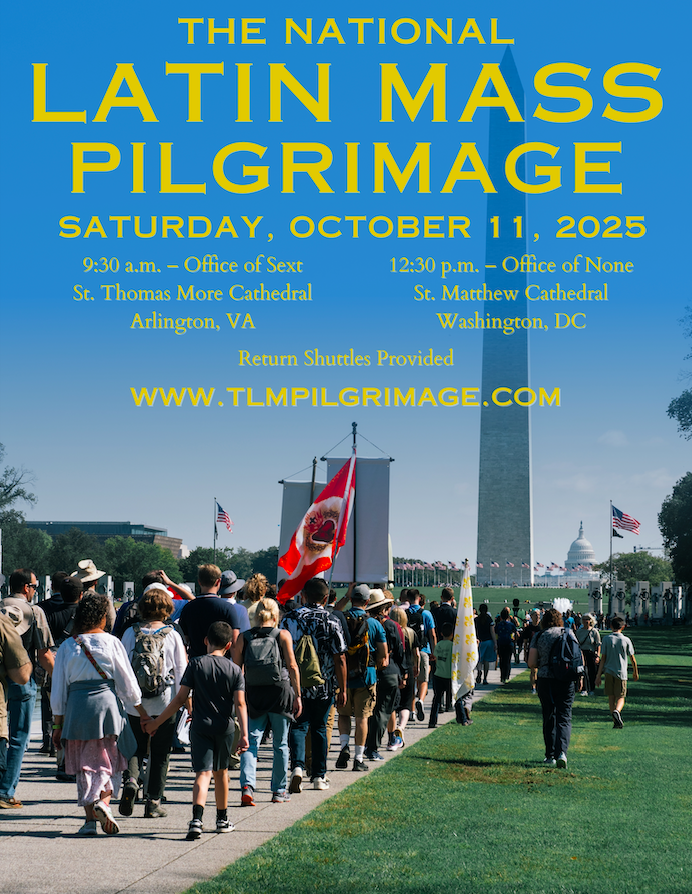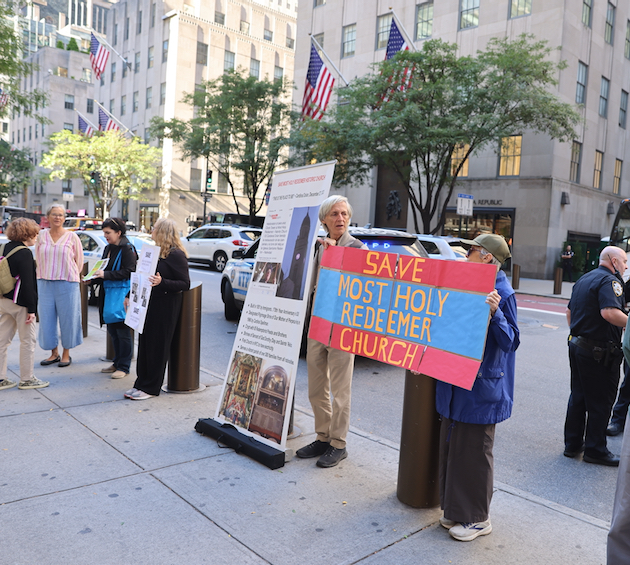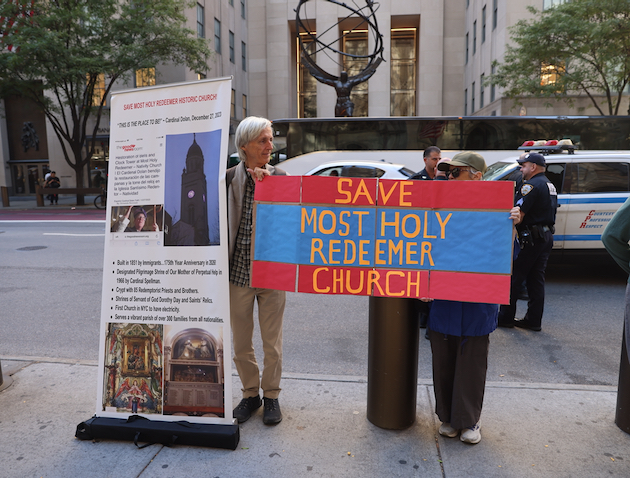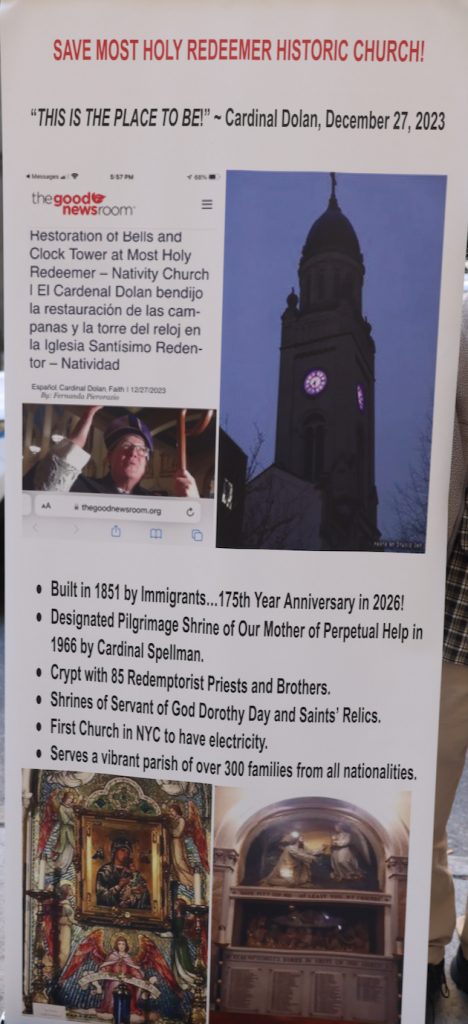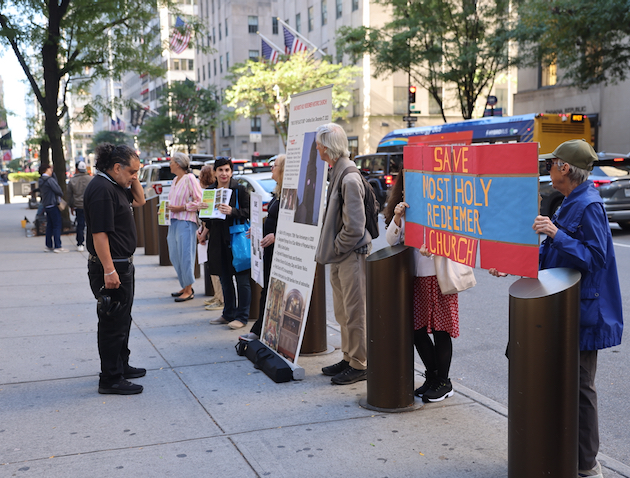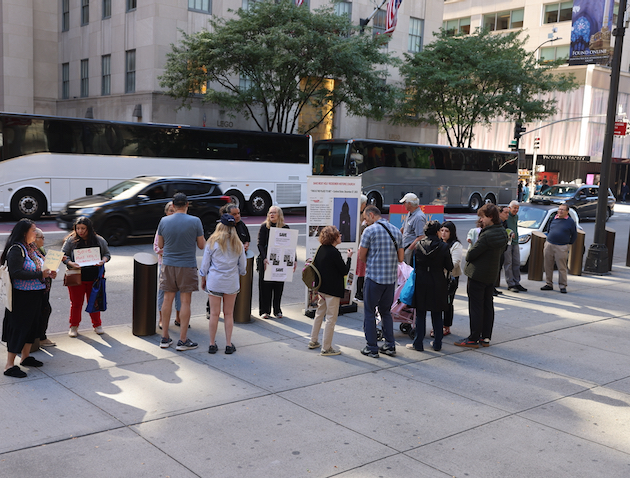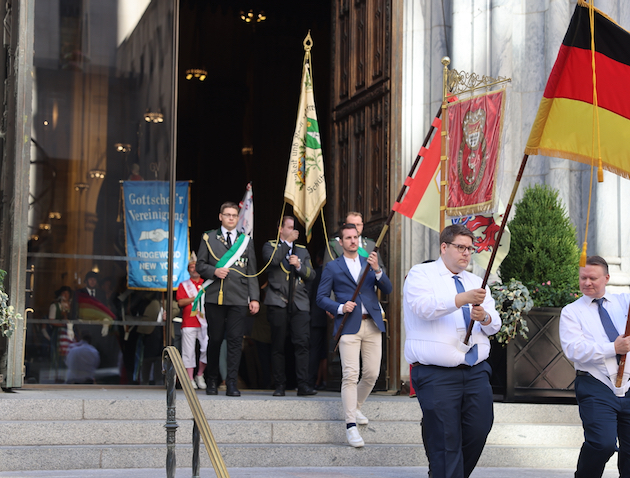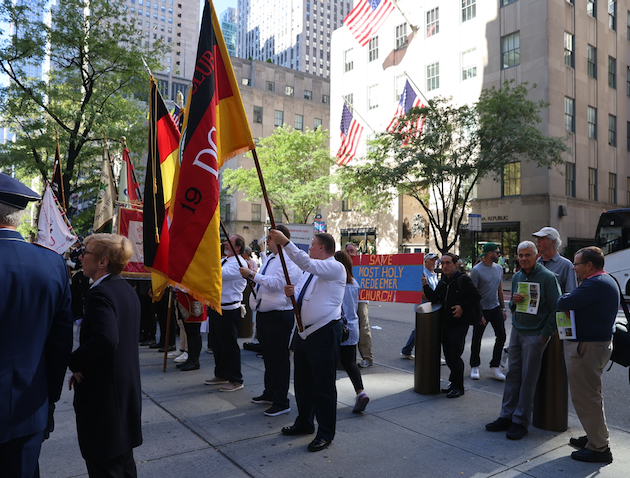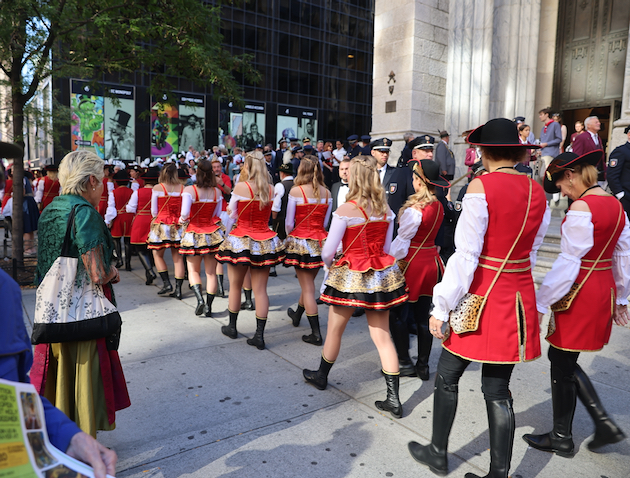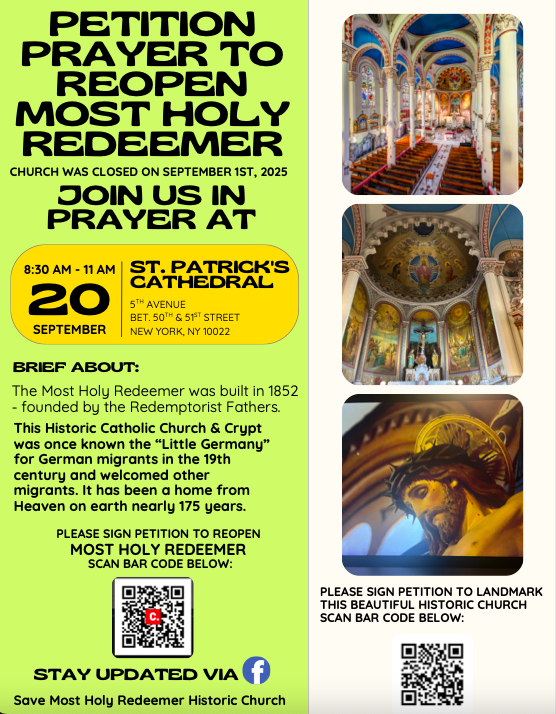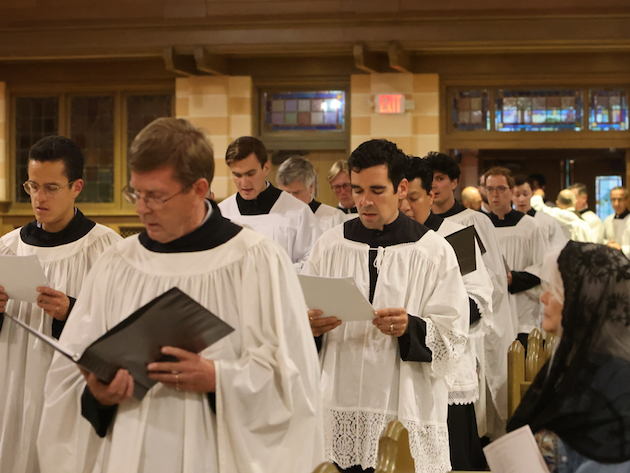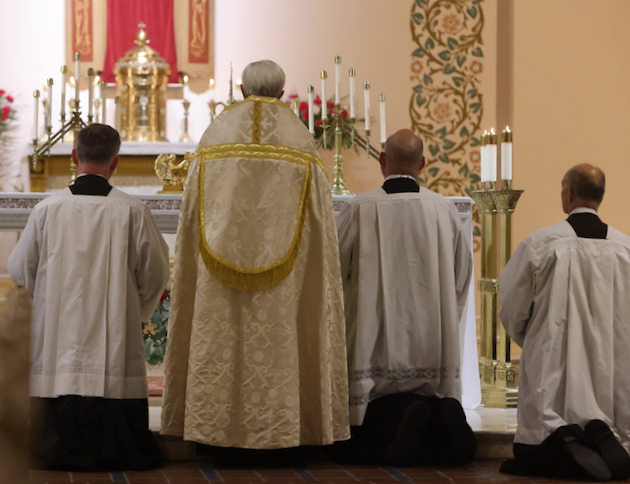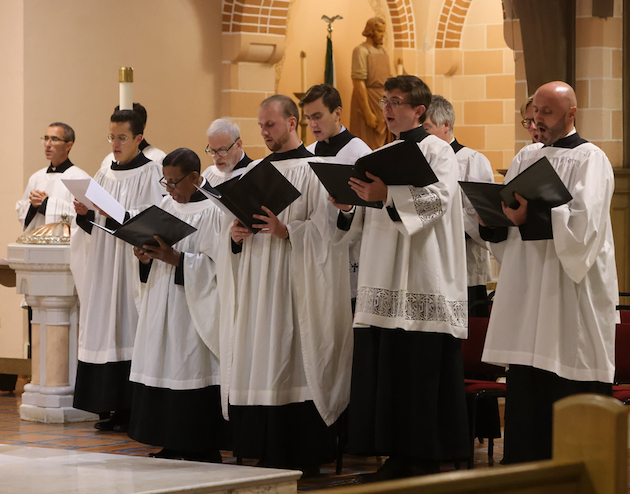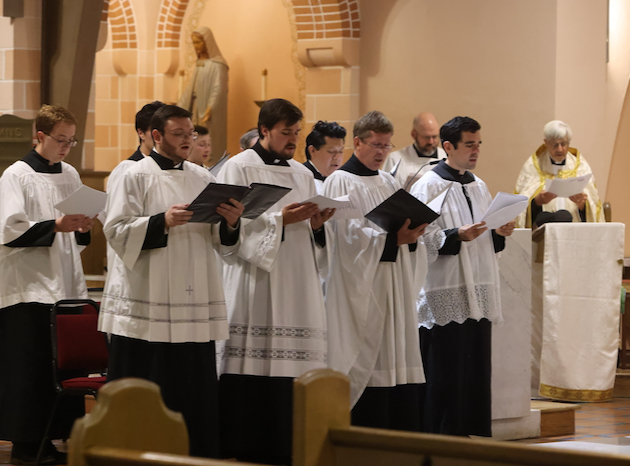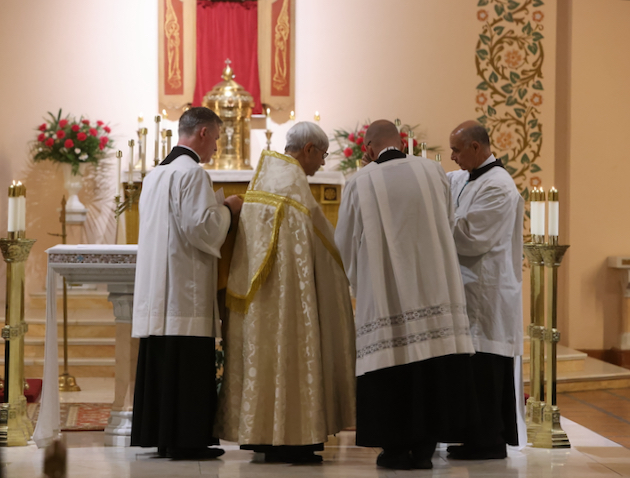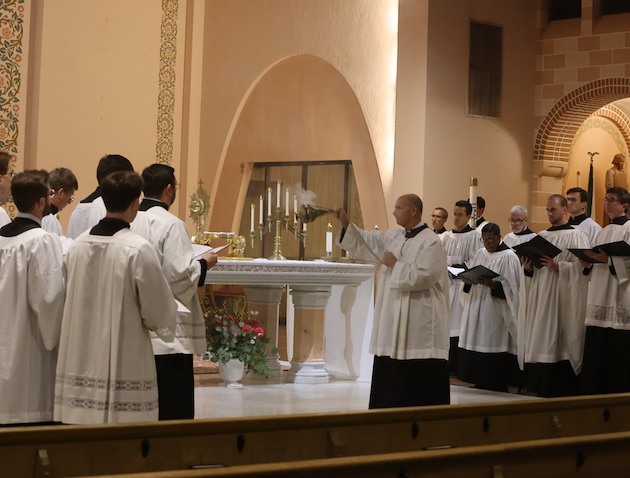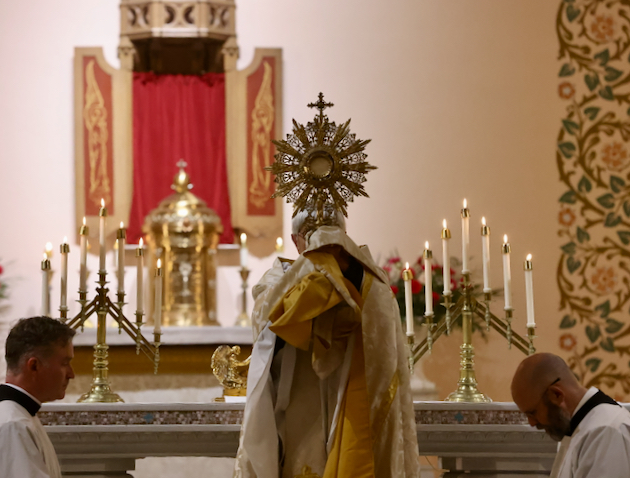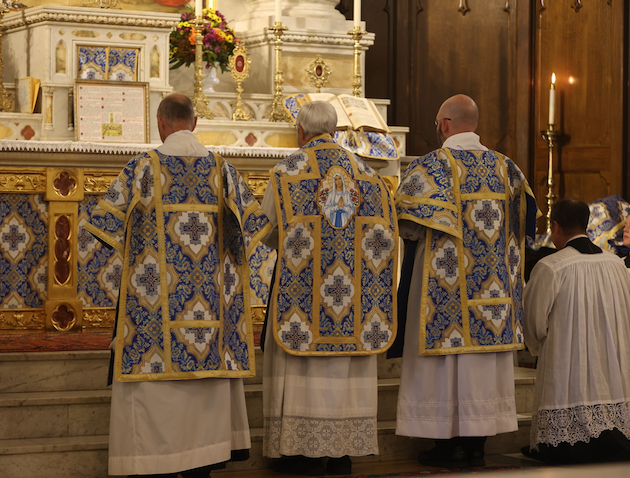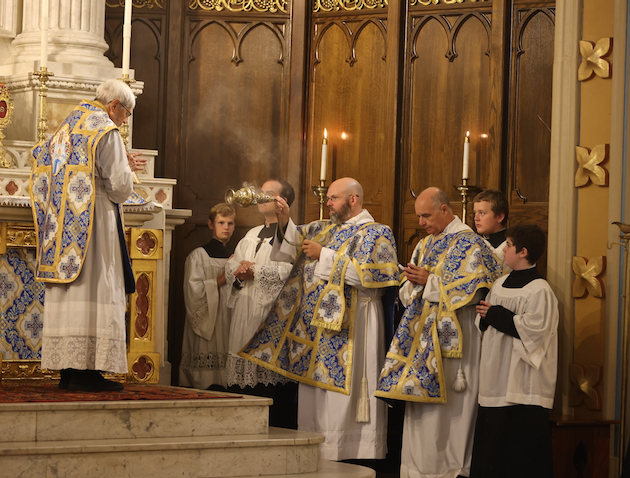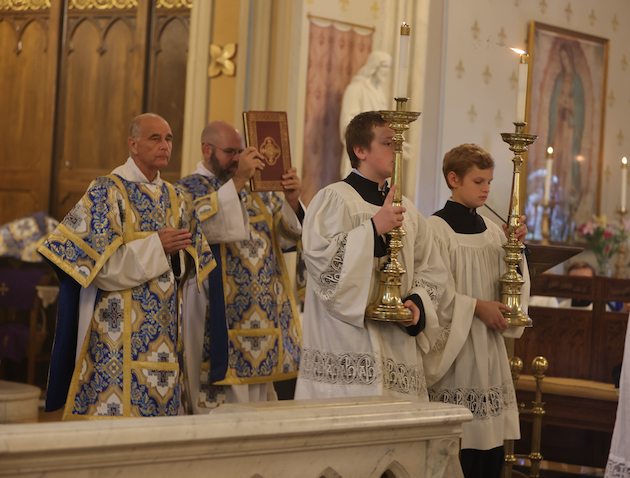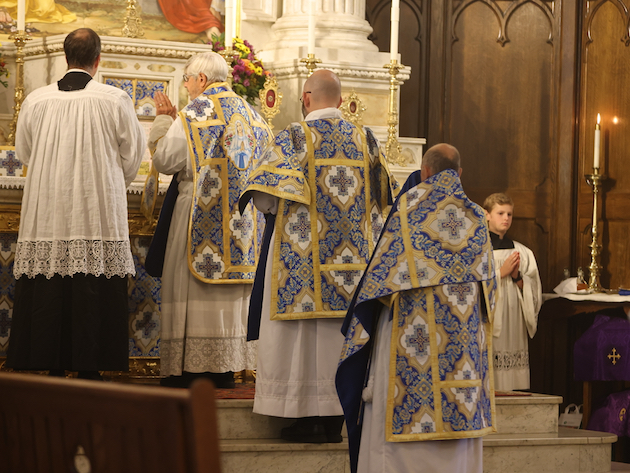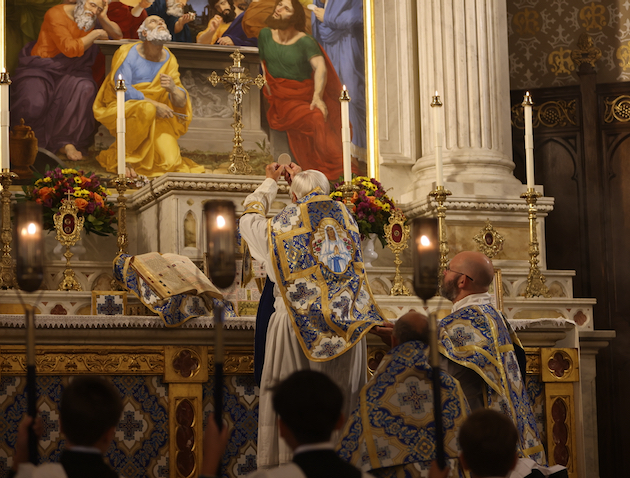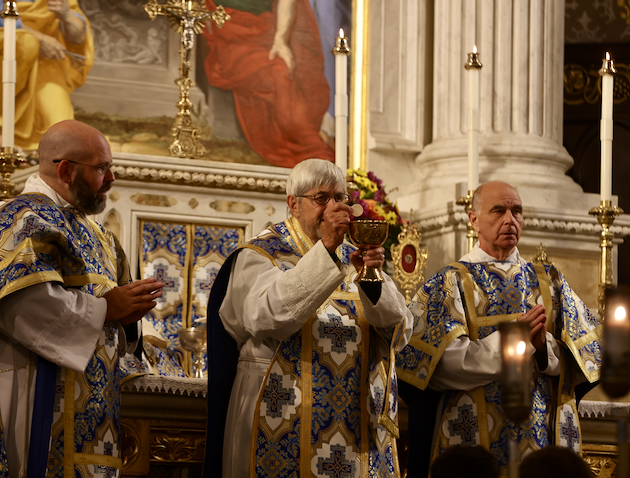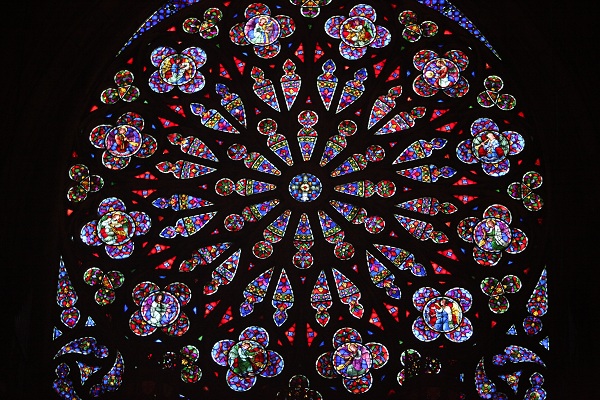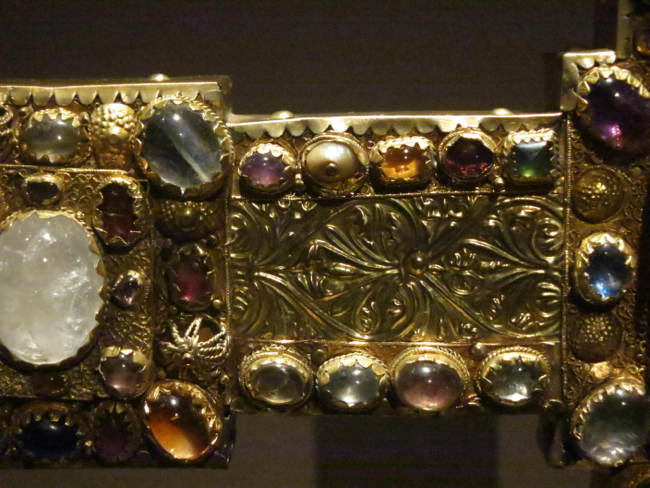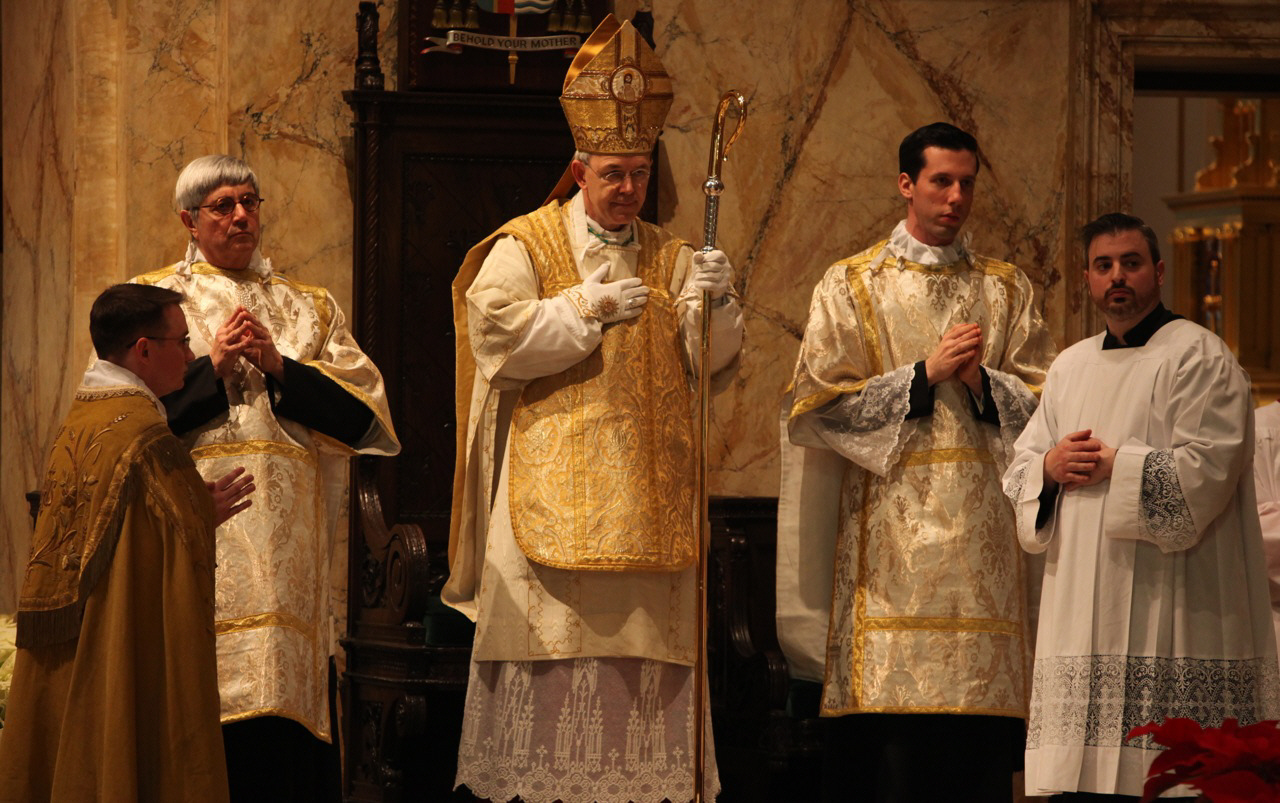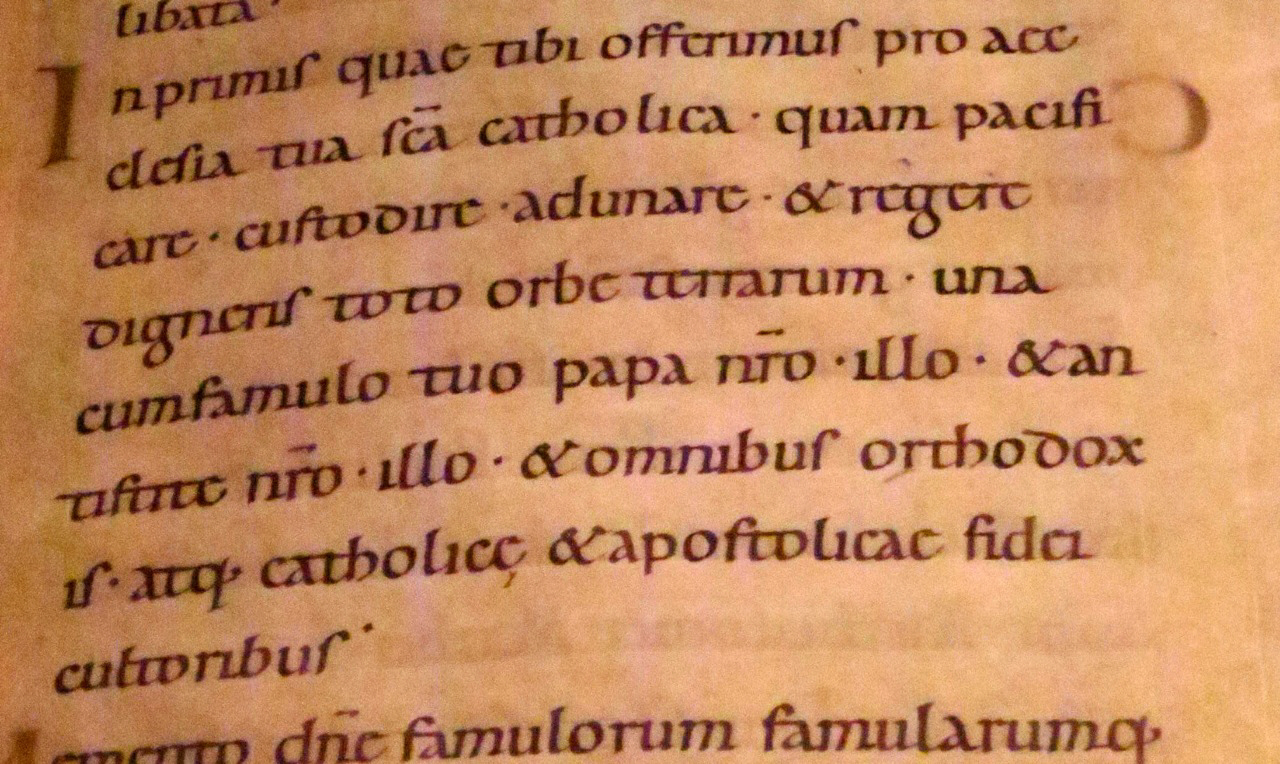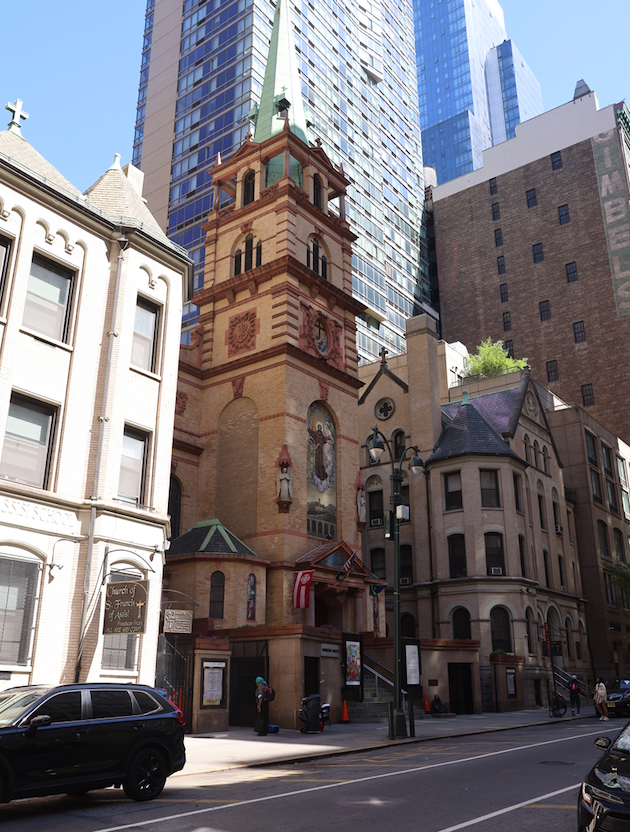
(Above) The tower of St. Francis of Assisi church on West 31st Street.
A. St. Francis of Assisi
The church near Penn Station best known to the general public – at least in New York City – is the Franciscan St. Francis of Assisi. In addition to its accessibility to commuters in and out of Penn Station, the extended hours for the sacrament of penance used to attract Catholics from all over the city. The main church and even more so the large downstairs church offered all manner of devotions to the faithful. This parish still seems active and operational; not too long ago the sanctuary was given an effective renewal, substituting an impresive gilt reredos resembling the shrine of the Three Kings in Cologne for some mediocre modernistic decor from the 1960’s – 70’s.
Other recent changes seem more problematic. The downstairs church has been reconfigured, reducing both the number of confessionals and the size of the church space. A nondescript “workers chapel “ was recently installed. (Why? – hasn’t the whole church since the 1920’s catered to the men and women working in New York City, wherever their home might be?) I believe confession times have also been reduced. And of course, the parish has attracted attention for its LGBT engagement. My general impression is that the parish of St. Francis of Assisi and the Franciscans have made efforts to fit in with the “modern world.” On the other hand, of the Catholic churches around Penn Station, St Francis of Assisi has received the least attention as a potential candidate for closure. I seem to remember that there was once talk of selling some of the buildings – such as those on 32nd Street – but now I cannot find even a reference to such supposed plans.
On a recent visit this church seemed quieter and more deserted than I recall it being in the past. Very few candles were lit in the outside courtyard. Unless I had overlooked an additional entrance, the downstairs chapel and shrines were locked. Is this dwindling of the formerly lively activity just a chance occurrence on one particular day – or was it because the decline of Catholic practice at the parish level eventually reduces the “business” at New York “commuter churches” such as St. Francis of Assisi as well? Does the Catholic population still experience the desire for shrines, devotions, confessions and daily mass that St. Francis of Assisi offers when their basic knowledge of their faith is declining ever more rapidly?
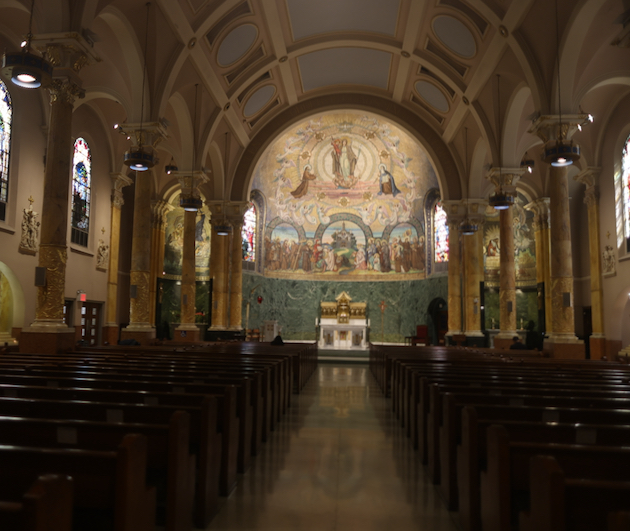
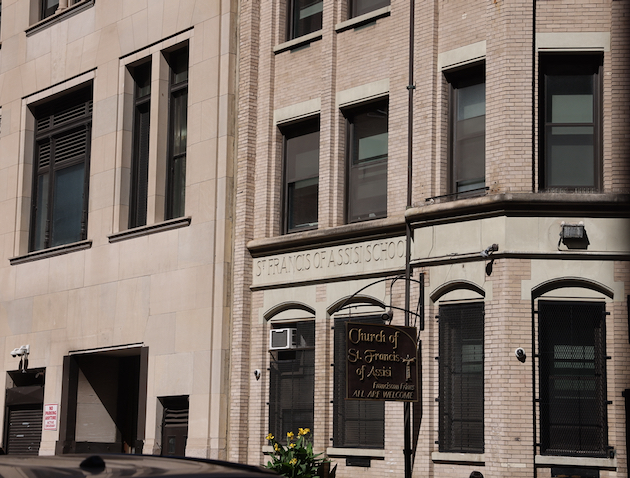
(Above) The old school. St. Francis of Assisi was once a German ethnic parish. (Below) Banks of candles in the courtyard, mostly unlit.
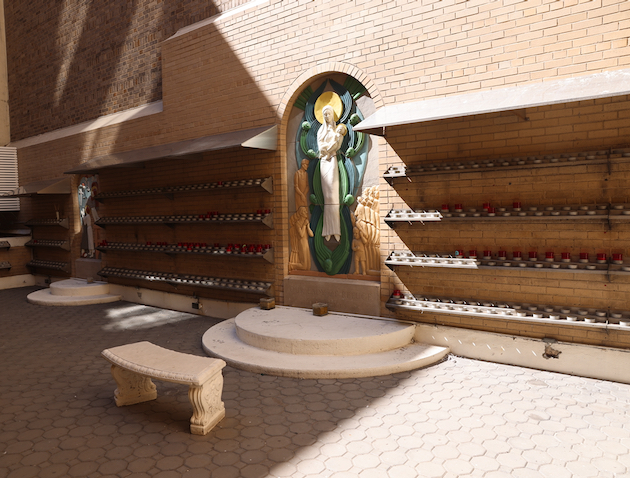
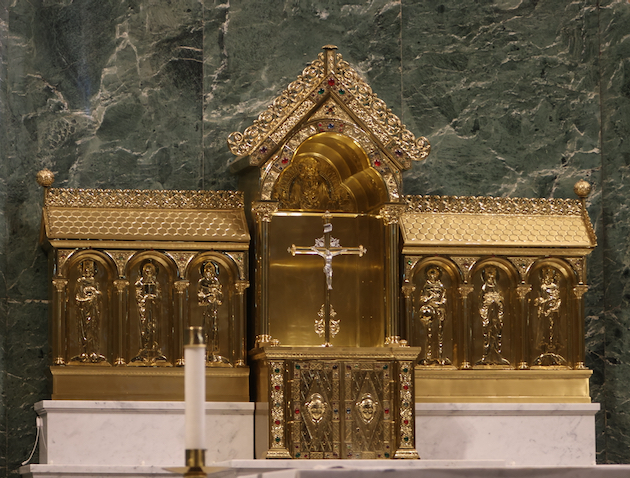
(Above) This recently reconstructed altar imitates medieval art of the 12th-13th centuries in what is now Germany and Belgium. (Below) The most notable feature of this church are the mosaics – very expensive at the time of their creation. I can’t say these are masterpieces of the art of mosaic.
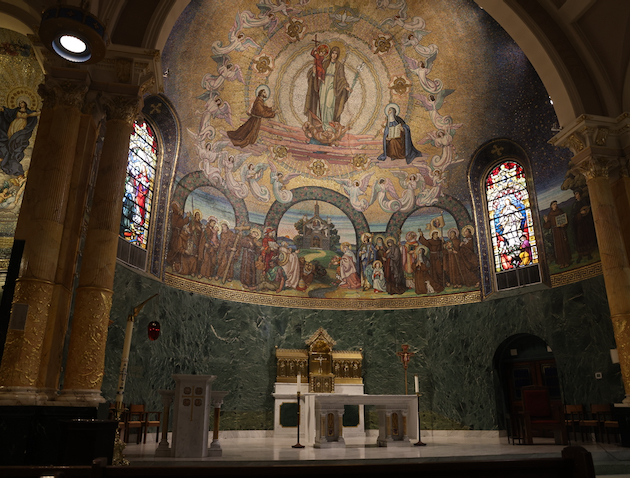
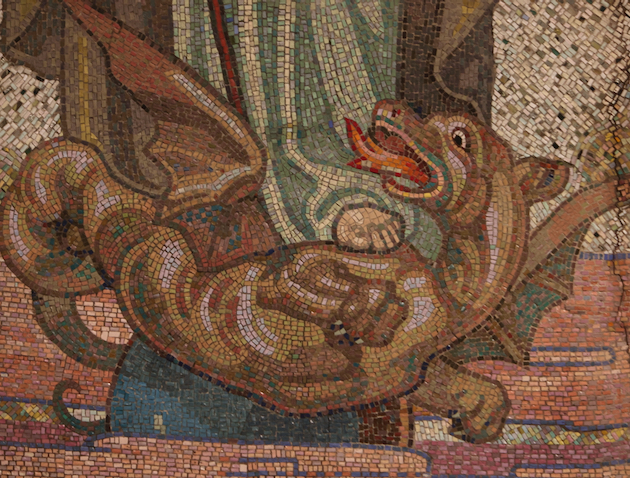
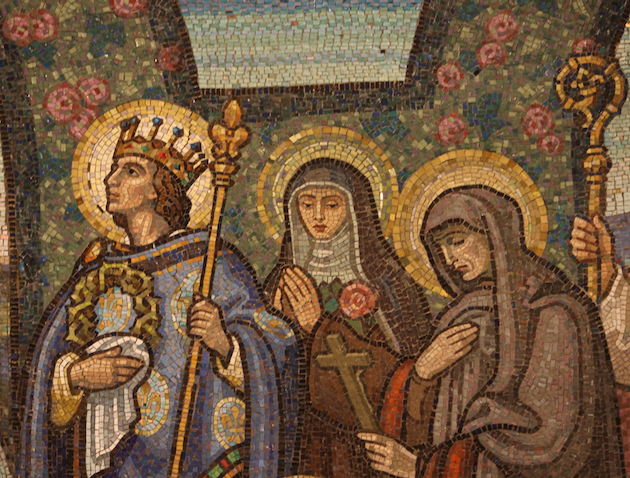
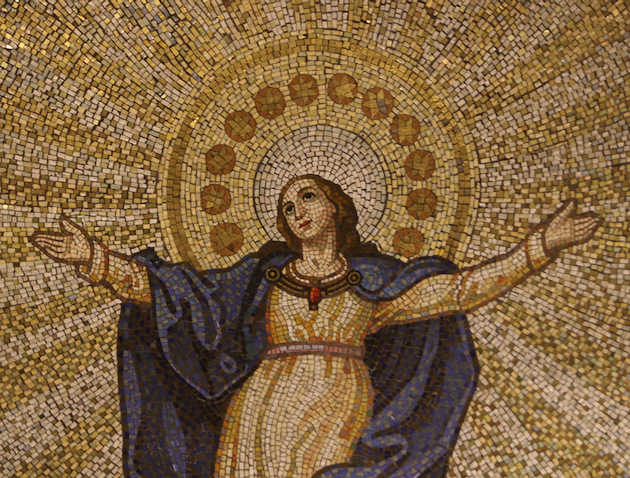
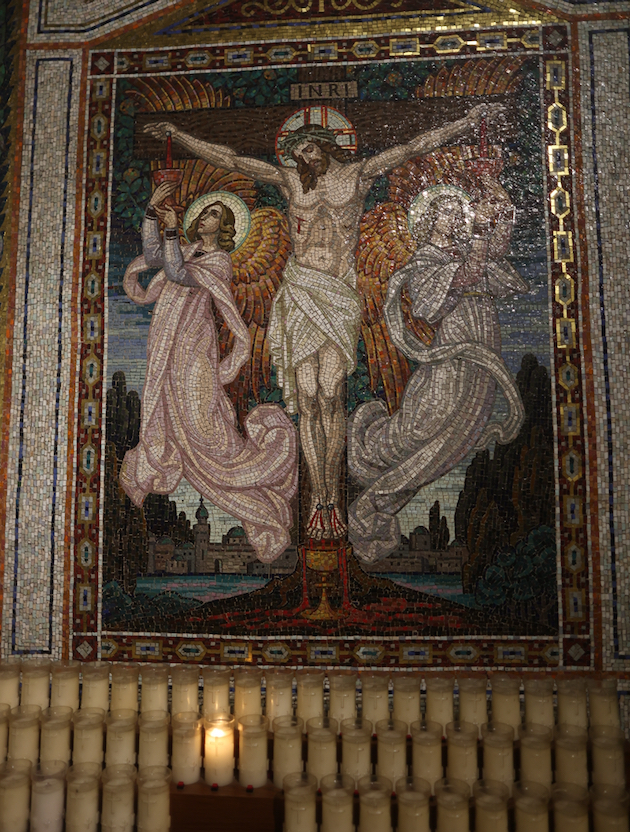
(Above and below) More successful are mosaics in small chapels in the rear of the nave.
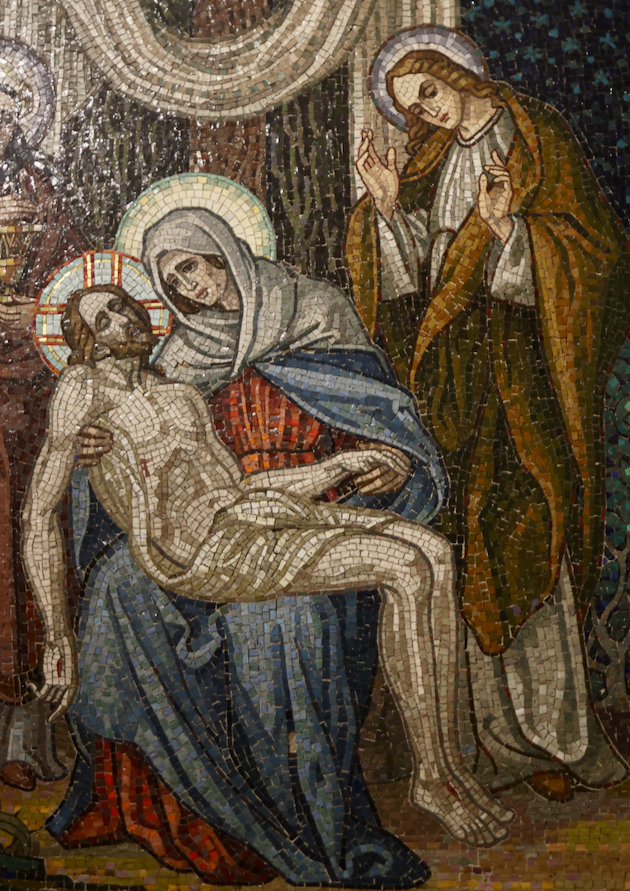
B. St John The Baptist.
The Capuchin church of St. John the Baptist, on West 30th Street, is now the parish of “Holy Cross — St. John the Baptist,” linking St. John’s with Holy Cross Church on West 42nd Street – even though several other parishes lie between the two halves of “Holy Cross – St. John the Baptist parish.” But then, the alleged “Making all Things New” parish planning initiative was not necessarily known for producing logical or sustainable results.
Artistically, St. John’s is a far more important building than its nearby Franciscan competitor. While St. Francis of Assisi is your typical New York Victorian Catholic church, St. John the Baptist is a French Gothic jewel by the noted architect Napoleon LeBrun. Regrettably, over the years this beautiful, historic church has frequently been mentioned as a target for closure or sale. For example, in 2016, after the Capuchins sold their monastery to a developer, there was a report that that space – and perhaps the church as well – would make room for a retail building.1) More recently, there emerged a (revived) plan to demolish the church – and the entire block – to make room for the expansion of Penn Station. As of 2025 that plan has been scrapped.2)
The 1974 Capuchin monastery on West 31st Street , sold to developers around ten years ago, remains a dilapidated ruin. The central medallion of the facade was long ago stripped of its Vatican II–style “resurrected Jesus.” Now the only entrance to the church is on 30th street. In front of the tower of the church, a small Marian Garden has been created.
Inside, the church of St. John the Baptist is in remarkably fine condition. It is a wonderfully Catholic space: Gothic, but bright, not dark – with fine windows, shrines with banks of lit candles, and statues. Especially the shrine of Padre Pio – and several of his relics on display – attract the devotion of the faithful. The only discordant element is the new paintings filling the apse, similar to what was installed in St. Brigid’s on Tompkins Square. The intent was to fill a visual vacuum created by an early stage of the liturgical movement – but sometimes it’s best to leave well enough alone
St. John’s today seems a very active, even lively place. It’s quite a contrast with 30-40 years ago, when the church of St. John’s was usually silent and deserted, and all the activity was to be found at St. Francis of Assisi. Is this change – if that is what it is – attributable to the devotion to Padre Pio? Or could this parish have somehow preserved or recovered an authentically Catholic atmosphere and spirituality – and that is what the men and women of today are really seeking?
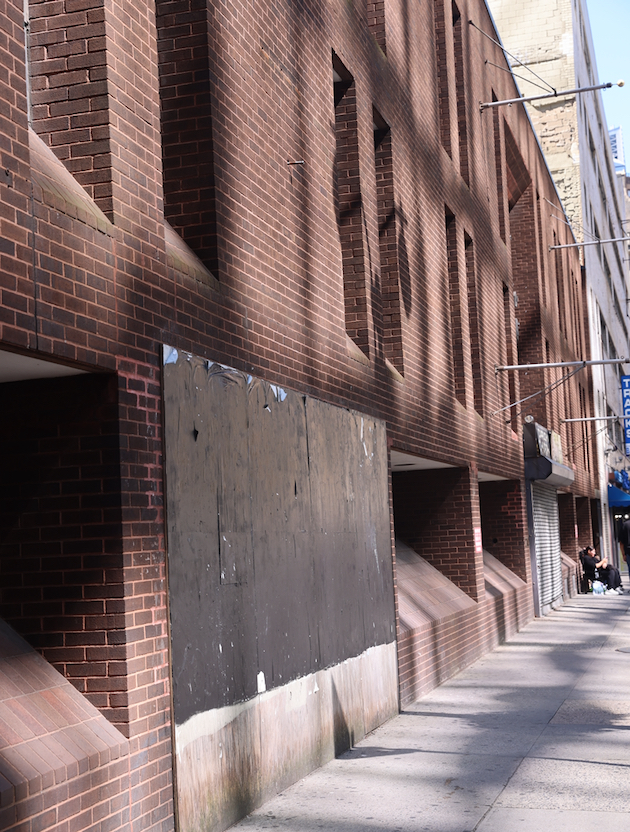
(Above and below) The wreck of the former Capuchin convent on 31st Street. For the original appearance see the photos in the article cited at footnote 1.
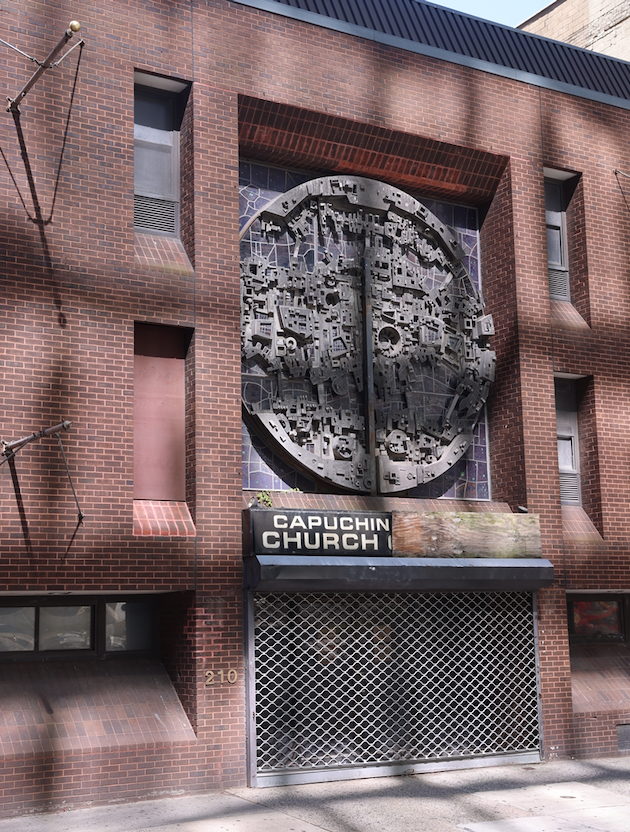
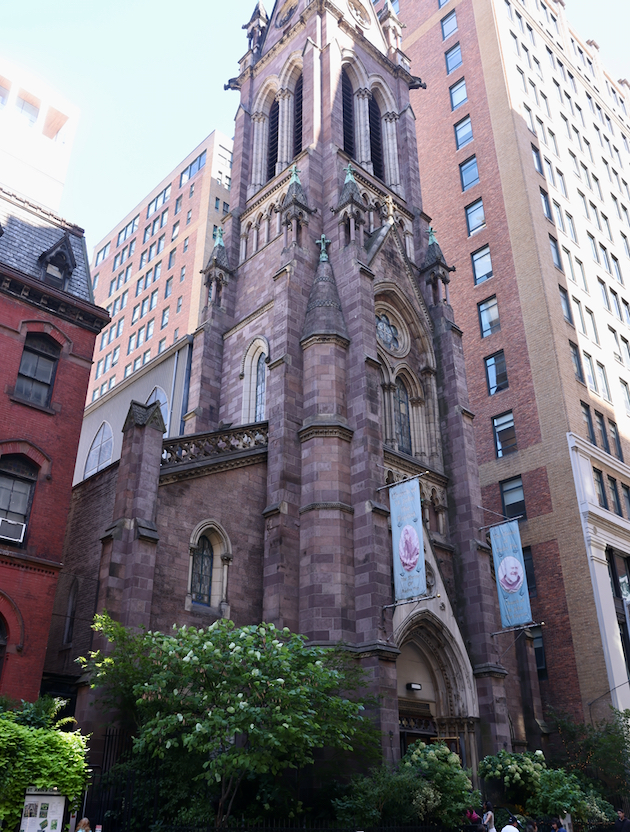
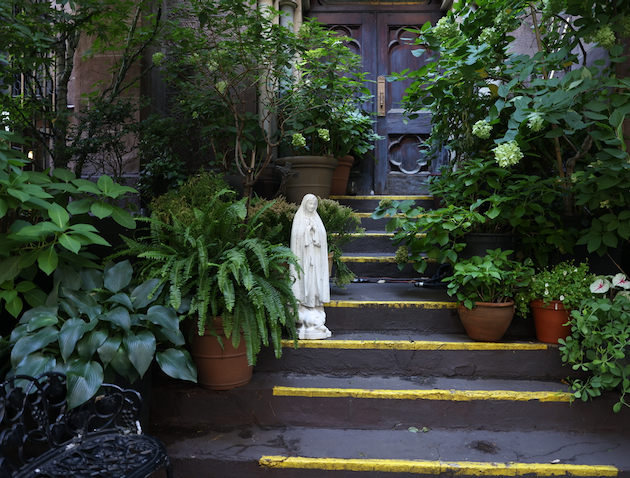
(Above) The garden on 30th street.
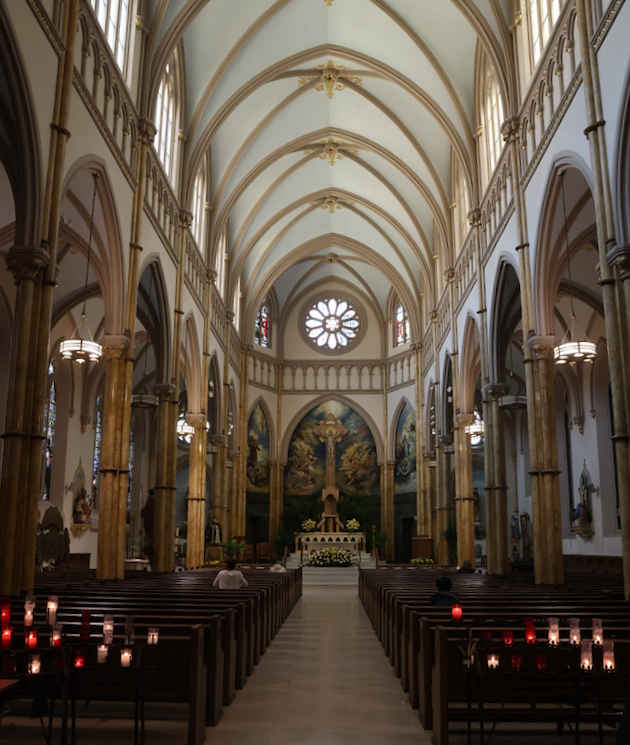
(Below) The new paintings in the apse.
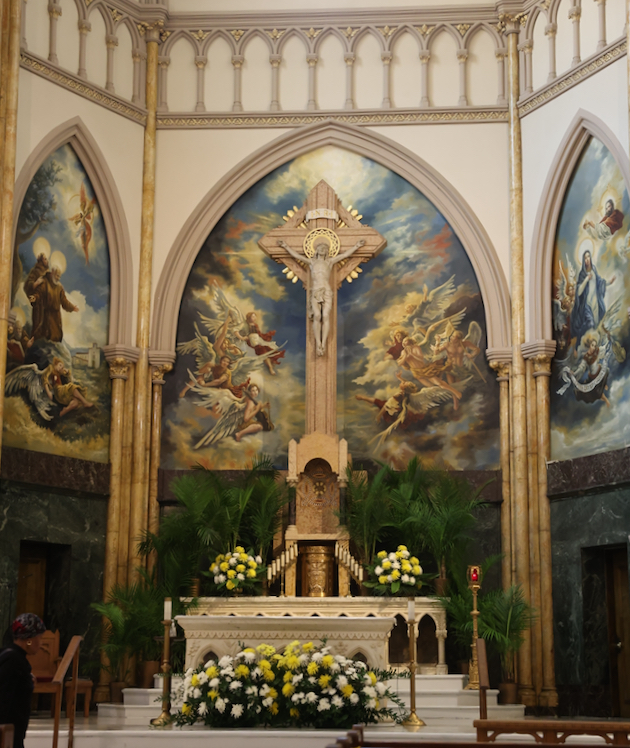
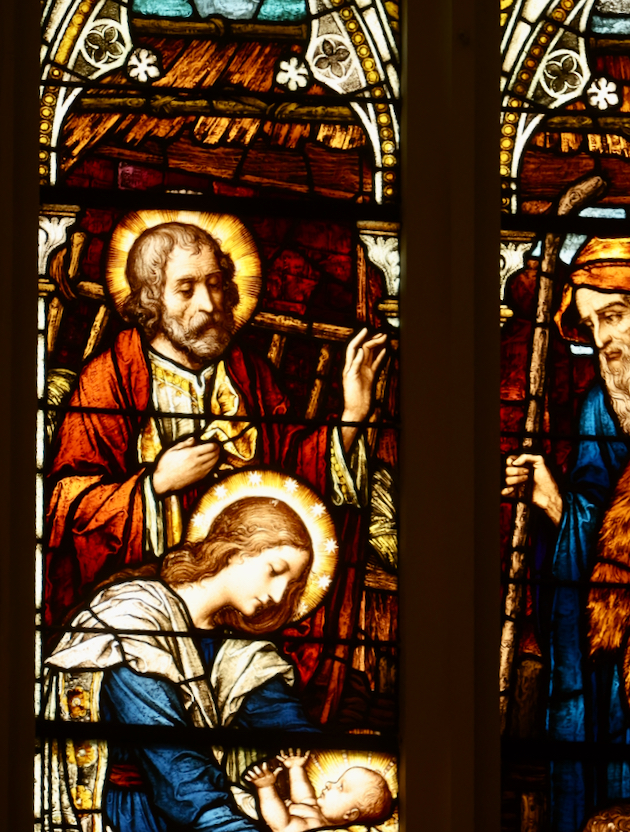
(Above and below) St. John the Baptist has very fine windows from Innsbruck.
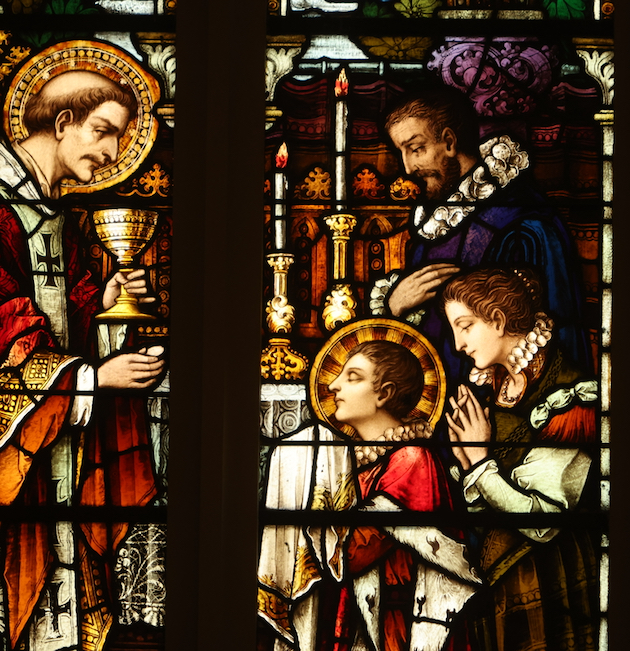
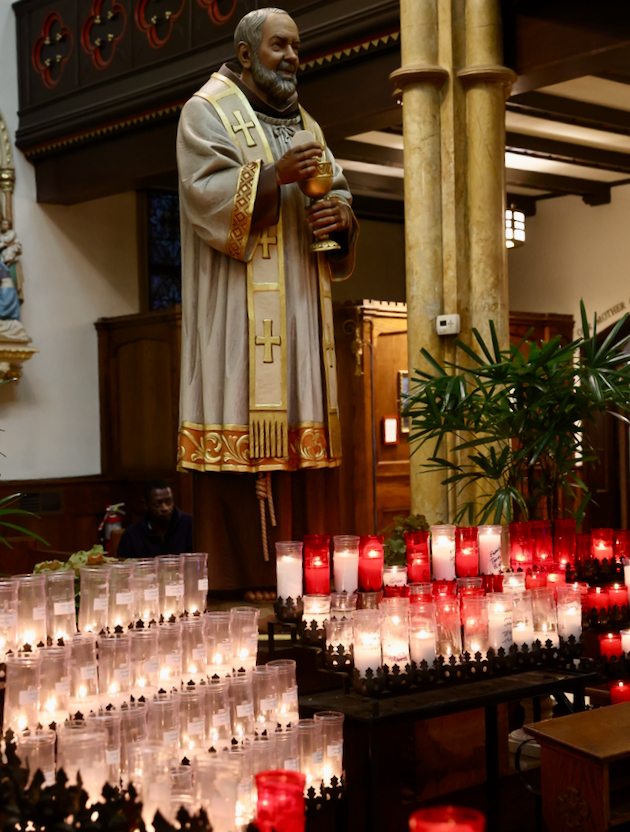
(Above) The shrine to Padre Pio (Below) One of several relics of Padre Pio.
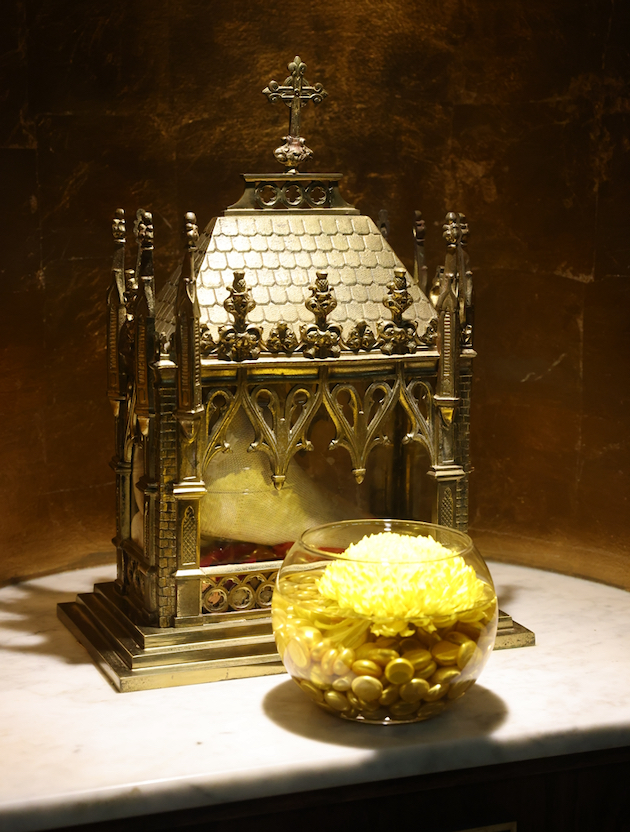
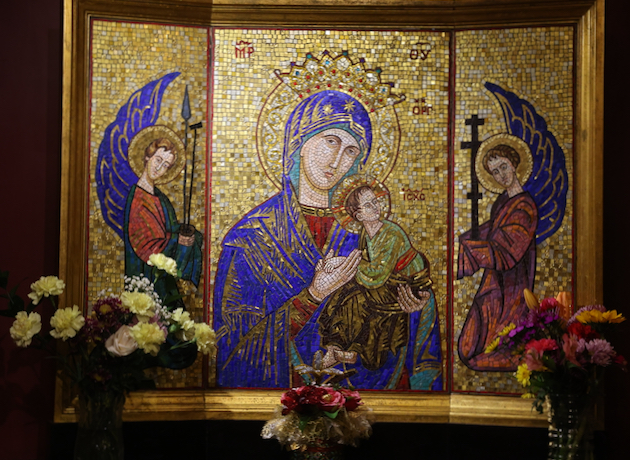
(Above) I seem to recall that this icon was previously in the vestibule.
- Schulz, Dana, “Historic church near Penn Station to be converted to modern retail space,” 6sqft.co (11/09/2016)
- Oreskes, Milton, “Hochul’s Retreat on Penn Station Expansion Will Spare Entire Block from Demolition,” Our Town NY (3/22/2025); See also: Allen, Dashiell, “Reimagining Penn: Politicians Pitch Housing-Focused Alternative to Abandoned Vornado Plan,” West42st.com ( 3/7/2025).
